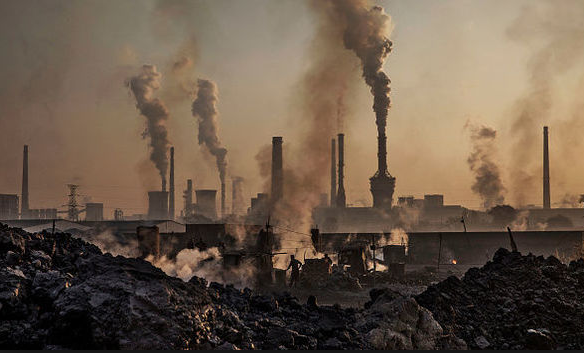
Poor air quality can make it hard to breathe—and it may take a few days for your body to recover. One type of air pollution is the fine particles (2.5 micrometers in diameter or less) from factories, power plants, and car exhaust. Another significant type is ozone, the main ingredient of urban smog. When you breathe in high levels of fine particles or ozone, your lungs can become irritated. Outdoor air pollution has been associated with asthma, heart attacks, strokes, and cancers. Earth
Mon 12/34/56 4:00
AIR POLLUTION ENVIRONMENTAL CAUSE PREMATURE MORTALITY
Air pollution is one of the major environmental causes of premature mortality, overtaking dirty water and lack of sanitation. Air pollution concentrations in some cities already far exceed World Health Organization safe levels. They are projected to deteriorate further to 2050.
The number of premature deaths from exposure to particulate matter (PM) (leading to respiratory failures) is projected to double worldwide, from just over 1 million today to nearly 3.6 million per year in 2050, with most deaths occurring in China and India.
The absolute number of premature deaths from exposure to ground-
More than 40% of the world’s ozone-
Nowadays only 2% of the global urban population are living with acceptable M10 concentrations according to WHO Air Quality Guideline of 20 µg/m3.
Approximately 70% of the urban population especially in the BBRICS countries are exposed to concentrations above the highest interim standard that a value above 70 µg/m3.
Despite the air quality improvements projected to 2050 the Baseline scenario on the OECD countries indicates that the population living in areas with a PM level above 70 µg/m3 will increase percent wise.
BBRICS is the acronym coined for an association of five major emerging national economies: Brazil, Russia, India, China and South Africa. Originally the first four were grouped as "BRIC" (or "the BRICs"), before the induction of South Africa in 2010.[5] The BRICS members are known for their significant influence on regional affairs; all are members of G20.[6] Since 2009, the BRICS nations have met annually at formal summits. China hosted the 9th BRICS summit in Xiamen on September 2017,[7] while South Africa hosted the most recent 10th BRICS summit in July 2018. The term does not include countries such as South Korea, Mexico and Turkey for which other acronyms and group associations were later created. South Africa (Republic of South Africa)Vivamus vel sapien. Praesent nisl tortor, laoreet eu, dapibus quis, egestas non, In eget sapien vitae massa rhoncus lacinia. Nullam at leo nec metus aliquam semper. Phasellus tincidunt, ante nec lacinia ultrices, quam mi dictum

